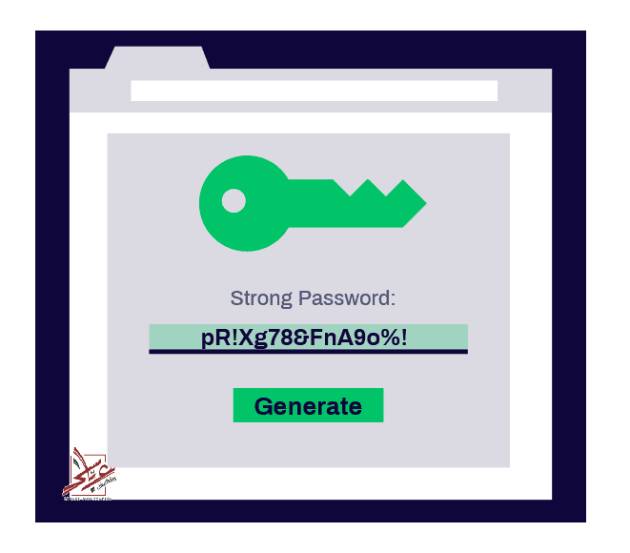
How to Create Strong and Secure Passwords
Introduction:
In the digital age, the importance of creating strong and secure passwords cannot be overstated. With an increasing number of cyber threats and data breaches, it is crucial to protect our online accounts and personal information. In this comprehensive guide, we will explore the best practices for creating strong and secure passwords that are difficult to crack. We will also discuss the importance of password management tools and other measures to enhance password security.
1. The Basics of Password Security

Before we dive into the specifics of creating strong passwords, it’s essential to understand the fundamentals of password security. Here are some key principles to keep in mind:
- Length: A longer password is more secure than a shorter one. Aim for a minimum of 12 characters.
- Complexity: Use a combination of uppercase and lowercase letters, numbers, and special characters to increase complexity.
- Avoid Common Patterns: Avoid using sequential numbers, common phrases, or easily guessable patterns.
- Unique Passwords: Use different passwords for each online account to minimize the impact of a potential breach.
2. Crafting Strong Passwords
Now that we understand the basics, let’s delve into the strategies for creating strong and secure passwords:
- Avoid Personal Information: Do not use personal information such as your name, birthdate, or address in your password. Hackers can easily guess these details.
- Mnemonic Phrases: Create a password using a memorable phrase or sentence. For example, “ILove2Run4Exercise!” is a strong password that incorporates uppercase and lowercase letters, numbers, and special characters.
- Random Character Sequences: Another effective method is to generate a password using a random combination of letters, numbers, and symbols. For example, “X6@eP#nK9!q” is a strong password that is difficult to guess.
- Password Generators: Consider using password generators provided by reputable password management tools. These tools can create complex and unique passwords for each account.
3. The Role of Password Management Tools
Managing multiple strong passwords can be challenging. Here’s where password management tools come into play:
- Password Vaults: Password management tools like LastPass, Dashlane, and 1Password provide a secure vault to store all your passwords. These tools also offer features like password generation and automatic form filling.
- Two-Factor Authentication (2FA): Enable two-factor authentication whenever possible. This adds an extra layer of security by requiring a second verification step, such as a code sent to your mobile device, in addition to your password.
- Biometric Authentication: Take advantage of biometric authentication options like fingerprint or face recognition when available. These features provide an extra layer of security.
- Regularly Update Passwords: Update your passwords periodically, preferably every three to six months, to maintain optimal security.
4. Password Security Hygiene
Creating strong passwords is just the first step. It’s equally important to follow good password security hygiene:
- Avoid Sharing Passwords: Never share your passwords with anyone, including friends, family, or colleagues.
- Be Wary of Phishing Attempts: Be cautious of emails, messages, or websites that ask for your login credentials. Hackers often use phishing techniques to trick users into revealing their passwords.
- Wi-Fi Security: Use secure Wi-Fi networks when accessing sensitive accounts, especially in public places. Avoid using unsecured public Wi-Fi networks, as they can be easily compromised.
- Regular Software Updates: Keep your devices, operating systems, and applications up to date. Updates often include security patches that address vulnerabilities.
5. Additional Tips for Enhanced Security
To further enhance your password security, consider the following measures:
- Security Questions: Avoid using predictable answers to security questions. Instead, choose answers that are unique and not easily guessable.
- Password Expiration Policies: Some organizations enforce password expiration policies that require users to change their passwords at regular intervals. If applicable, follow these guidelines and update your passwords accordingly.
- Multi-Factor Authentication (MFA): MFA adds an extra layer of security by requiring users to provide multiple forms of verification, such as a password and a unique code sent to their mobile device. Whenever possible, enable MFA for your accounts.
- Avoid Auto-Login: While it may be convenient, avoid enabling the auto-login feature on websites or apps. This feature saves your login credentials, making it easier for unauthorized individuals to access your accounts if they gain access to your device.
- Avoid Storing Passwords in Plain Text: Never store your passwords in plain text format, whether it’s on your computer, phone, or written on a piece of paper. Instead, use password management tools to securely store and manage your passwords.
- Regularly Monitor Your Accounts: Stay vigilant and regularly monitor your online accounts for any suspicious activity. If you notice any unauthorized access or unusual behavior, take immediate action, such as changing your password and notifying the account provider.
- Educate Yourself: Stay informed about the latest security threats and best practices for password security. Follow reputable sources, websites, or security blogs to stay up to date with emerging trends and techniques used by hackers.
Conclusion:
In conclusion, creating strong and secure passwords is a crucial step in safeguarding our online accounts and personal information. By following the best practices outlined in this guide, such as using complex passwords, leveraging password management tools, and practicing good password security hygiene, we can significantly enhance our protection against cyber threats.
Remember, the key to password security lies in using unique and robust passwords for each account, regularly updating them, and utilizing additional security measures like two-factor authentication and biometric authentication when available. By incorporating these strategies into our digital habits, we can significantly reduce the risk of falling victim to password-related attacks and ensure a safer online experience.
Stay proactive, stay informed, and stay secure!


Comments (0)